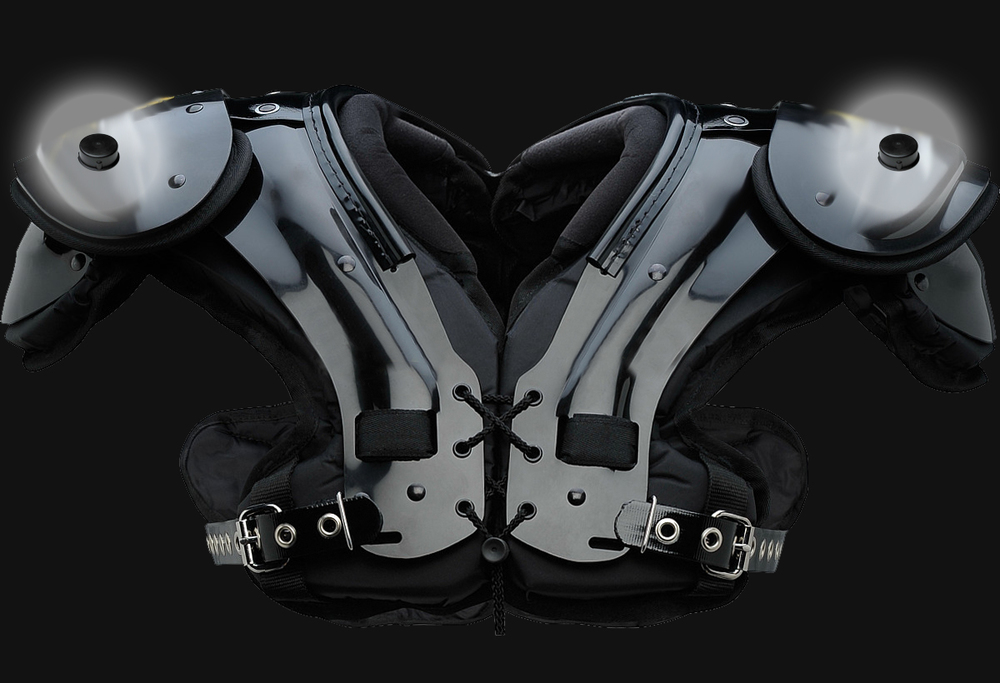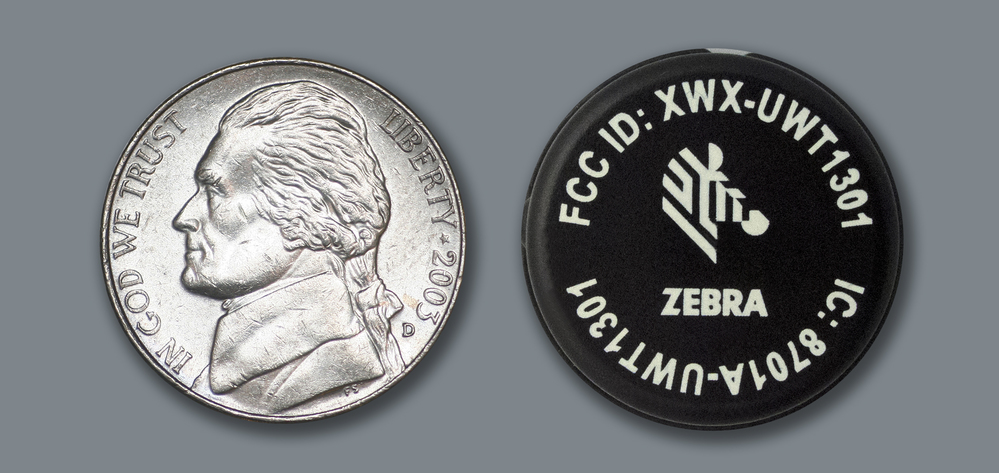How High-tech Player Tracking Became a Key Part of the NFL [Q&A Interview]
Share:
Welcome to Thomas Insights — every day, we publish the latest news and analysis to keep our readers up to date on what’s happening in industry. Sign up here to get the day’s top stories delivered straight to your inbox.

This year marks the 100th anniversary of the National Football League (NFL). The sport has evolved dramatically since its debut in 1919, upgrading nearly every facet of the game including equipment, rules, and statistic tracking.
Most recently, the league extended through 2021 its partnership with Zebra Technologies Corporation, the official provider of on-field player tracking products, to create a unique intersection of technology and athleticism.
To keep tabs on player performance during NFL games, Zebra Technologies developed Next Gen Stats, a player and ball tracking system. Also known as the NFL Player Tracking System, Zebra's RFID chips are capable of recording location, speed, and acceleration for every play during games and practices by placing sensors and receivers throughout football stadium to detect tags embedded in footballs and players' gear.
The embedded RFID chips transmit real-time data, completely changing the game for coaches and spectators alike. Fans and coaches can now view passing, rushing, and receiving stats and top plays online while the game is underway.
In the 2019 NFL season, Zebra plans to install 1,700 tags on player equipment and 20,000 tags on footballs, bringing their technology to every team in the NFL.
Q&A with Zebra Technologies
Thomas Insights spoke with Adam Petrus, regional manager of client services and operations for Zebra Sports at Zebra Technologies, about how they make RFID chips that can stand up to the high-impact nature of a football field.
Thomas Insights: How does the technology work?
Adam Petrus: Every stadium venue is outfitted with the receivers and antennas, and those are all aimed appropriately to have every inch of the field covered. The players wear RFID tags embedded into their shoulder pads, located just underneath the epaulets — every player has them.
The software is unique in the sense that every tag that's located on a player is assigned to that player. Each player wears two tags: a left and a right. The down linemen wear a third tag just because they go down into a stance.
As they are on the field, the tags are transmitting at 12 hertz; you have constant communication from the tag to the receivers, which are receiving that information and then passing that to our hub where we are tracking every aspect of the play.
Although the players know they are wearing a tracking device, they don't feel it. We designed this tag so that it's very light, durable, and compact so that it has no impact on the players' performance. Because the last thing you want to do is be able to track somebody but make them wear a big old watch tracking device that is going to impact their play.

TI: How did Zebra get involved in the sports industry and begin creating microchips for sports applications?
AP: If you look at Zebra Technologies' body of work and what we do, Zebra builds technologies that enable businesses to improve their performance by connecting assets, data, and people. We are all about RFID technology, delivering a performance edge. The interesting thing is that you all have probably come into contact with our devices or our scanners without realizing it – for example, at a store checkout.
When the NFL needed to enhance and deliver what they are calling ‘the next generation of statistics,’ Zebra was at the forefront and capable of delivering on such an aggressive undertaking.
We took that past performance of what we were already doing in logistics, tracking, parts, and manufacturing – being able to scan packages and give you a real-time location – and flipped that approach to apply it to a sports model. Every NFL venue that a fan goes into – domestically and internationally to include games in London, Mexico City, and most recently in Winnipeg, Canada – our system is there to collect every player’s tracking data on that field.
TI: What do you think made Zebra uniquely qualified to handle this project?
AP: Other companies do player tracking systems, but Zebra is utilizing RFID technology where competitors would use GPS positioning. There are some challenges with using GPS; for example, they have limited functionality when used indoors. But using RFID receivers and antennas that are all calibrated to a main hub at every field or venue, we delivered a reliable, real-time product that the NFL could be proud of. And that's the bottom line.
TI: How did you ensure that these chips wouldn't impact players' performance?
AP: On game days, we have a staff that comes in and activates the tags before the players even arrive. We're out of the way, we're out of the picture, we're not even seen - we allow the professionals to focus on the game.
We have software that is updated with the 53-man roster; if we see any issues or anomalies, we can easily swap out those tags and reassign them to that player. As those players take the field, we're up in the press box and we're able to see the 11 on 11.
We worked with Wilson in Ada, Ohio to implant a tracking device inside the football. Even with our chips, the football still weighs the same as it did ten years ago, Wilson did a great job of being able to reduce a minor bit of the bladder and incorporate our tag. We can collect statistics to compare a Tom Brady throw to an Aaron Rodgers throw, you can see the difference in spin, number of evolutions, and even the force on a similar type of pass.
TI: What are some of the factors you needed to consider when building RFID chips for football applications?
AP: First and foremost is size: you need a device that can be read by antennas and receivers yet small enough to not impact the players' performance. It's almost the size of a nickel and only a few inches tall. It's a small device but the battery packs a punch.
The other thing to consider is durability because we're talking about the warriors of the NFL bashing into each other; it needs to be sturdy enough that the hardware won't get destroyed during the game because of contact. We were able to design an almost indestructible casing that is both waterproof and durable. In the last five years of our contract with the NFL, we never had an RFID tag break during a game.
However, RFID technology doesn't work well in water - that's just how radio-frequency identification works - so it was important to make sure that it was waterproof and no water would be covering the sensor by piling up on the tag.

TI: How do you think your technology is going to change the game for football coaches, players, and fans?
AP: It's enhancing how coaches make decisions and it's giving the players the ability to monitor their performance, which is exciting.
Coaches have access because NFL Next Gen Stats is posting live data during a game; they can see throwing charts or hot zones being generated. If the coaching staff isn't seeing some of those performance elements from the field, they have stats to go back on either during the game or post-game. They can look at a running back's strengths against particular types of defenses; they can glean these different aspects of the game to make coaching decisions and plan against their opponents.
In the NFL, there are two types of general managers and coaches: those that have embraced data analytics as a tool of the game, and former coaches and general managers, because they're going to get left in the past by not evolving, accepting, and understanding that technology can be integrated to assist in making on-field decisions.
There are examples of teams deciding how to run plays in the third or the fourth quarter based on the fatigue of their opponents. One team looked tired running the ball toward their sideline when they knew defense was making personnel changes so that the defenders had to run further to the huddle than the offensive substitutes. This data is being broken down with the potential to outsmart your opponent.
When it comes to the fan experience, fans are hungry for data analytics. There's also excitement and passion for a specific team or player, and fans want to see how they stack up. On a 100-yard kickoff return, we're able to show you that the athlete sustained a max speed of 21.3 miles per hour and traveled 140 yards for that touchdown.
Even Fantasy Football is a huge industry of its own. Fantasy Football is exciting - people want to be their own general manager, they want to be able to outsmart friends and colleagues, and Next Gen Stats is allowing the fans to enhance their fantasy team by being able to look at the trends, look at the stats, and make decisions based on performance.
This conversation has been lightly edited for clarity. Contributing writing from Duane Pokan.
Image Credit: Debby Wong / Shutterstock


